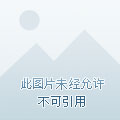When it comes to China's top cuisine, most people are expected to think of "full of Han Chinese". It is said that the Manchu Han whole table was a delicacy that only the emperors of the Qing Dynasty could enjoy, reflecting the top level of cooking in China, and it is said that there are hundreds of dishes, which can make people eat for three days without heavy samples. But in fact, when we go through the records of the Qing Dynasty, we have not found the saying "full seat of the Manchu Han Dynasty".
So, how did the phrase "full of Han People" come about?

The court banquets of the Qing Dynasty were actually not very exquisite at the beginning. When Nurhaci was still operating in Manchuria, the banquet was when Nurhaci himself sat with his relatives and descendants to drink wine and eat meat, chickens and ducks, and hunting. At this time, the court banquet is really just a meal, and it is more unrestrained at the banquet, and it will play music and dance when you are happy. In the Period of Emperor Taiji, the court banquet at this time began to pay attention to etiquette and inferiority, the Emperor Taiji himself sat alone at a large table, others were divided into two sides according to different identities, and the banquet began and ended. At this time, the banquet had a relatively strong political atmosphere. However, the court banquets of the Emperor Taiji period were still based on local customs, with the main food being noodles, and the dishes were mostly large pieces of animal meat, in addition to dairy products.
From the Shunzhi era onwards, the court diet underwent a major transformation and began to be combined with Han culture. During the Kangxi Dynasty, the combination of the two food cultures was advocated, and in general, they were moving closer to the Han food culture. However, there is no such thing as "full seats in Manchuria".
At that time, the banquet was mainly divided into full and Han seats.
The full table is the traditional Manchu food, the highest level is called "Rao Feast", that is, eating noodles and dairy products, not even meat, mainly drinking milk tea and eating noodles. At that time, the highest specification was a table of eight or two pieces of silver, equivalent to more than two thousand pieces now. These eight or two pieces of silver could not buy any excellent ingredients, and more than a hundred dishes were even more impossible.
The highest level of the Han seat is the banquet for the jinshi and the examiners after the completion of the examination. At that time, the banquet was nothing more than a variety of chicken, duck and fish meat, and the highest standard was 23 dishes, 8 fruits, 3 bowls of noodles and 4 small dishes, using the most common ingredients. And this dish is not freshly made, are prepared one day in advance the next day to eat cold, you can imagine these greasy cold dishes after eating the stomach will be what the consequences, do not diarrhea is not bad.
In the Qianlong period, Qianlong was more extravagant and better ate, and the imperial diet of the Qianlong period had begun to use a large number of bird's nests, and also began to use venison ingredients. It was not until cixi that sea cucumbers, shark fins and other foods were added.
Since the Manchu full table does not exist, how did it come about?
The manchu Han dynasty originally came from Li Dou's "Yangzhou Painting Record", which recorded many valuable dishes, in fact, this was the local food that qianlong paid tribute to when he went down to Jiangnan, and it had nothing to do with the imperial meal, and the person who ate it was not Qianlong, but the officials who accompanied Qianlong at that time.
In modern times, after the collapse of the Imperial Dining Room of the Qing Dynasty, the cooks who came out of the Imperial Dining Room had a "royal gimmick" in order to make themselves more popular, which led to the saying that the Manchu Han was fully seated, in short, the more expensive the better.
Do you understand?